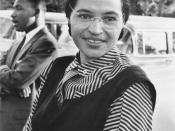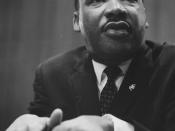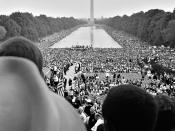Each decade in history is unique from any before it. Each has its own controversies, movements, accomplishments, and more that make it different and affect the way we view or title that era. For the first time though, as students and teachers we cannot be sure how to view the decade of the 1950ÃÂs, or classify it based on those controversies, movements, or accomplishments. This is because when the 1950ÃÂs rolls around, television is becoming a staple of the everyday family. Within television, there are shows called sitcoms and dramas that portray the life of a character, family, or group of friends. Now, when we look back into the 1950ÃÂs, we do so by watching the television shows of that time, and those shows give us a rough idea of what life was like then. But the problem is that media reality and actual reality can differ greatly, giving us a skewed idea of the time.
In the 1950ÃÂs, media mostly portrayed the idealistic life of white Americans, and if it did deviate from that picture perfect family, it still failed to address the real social and political controversy of the time, which was racial controversies and discrimination.
The 1950ÃÂs was a major turning point for American society. For the first time, suburbia was established. With those cookie cutter neighborhoods came a society of conformists who lived by being consumerists and placed heavy value on material possessions. And even bigger changes were occurring as well. Racial controversies were reaching the breaking point ÃÂ slavery had been abolished for nearly a hundred years, and African Americans were fast beginning to demand more equality (Bailey 461). The equality advocates of the Civil Rights Movement began to spring up: Rosa parks, Martin Luther King, and the Little Rock Nine. Massive governmental changes were...


